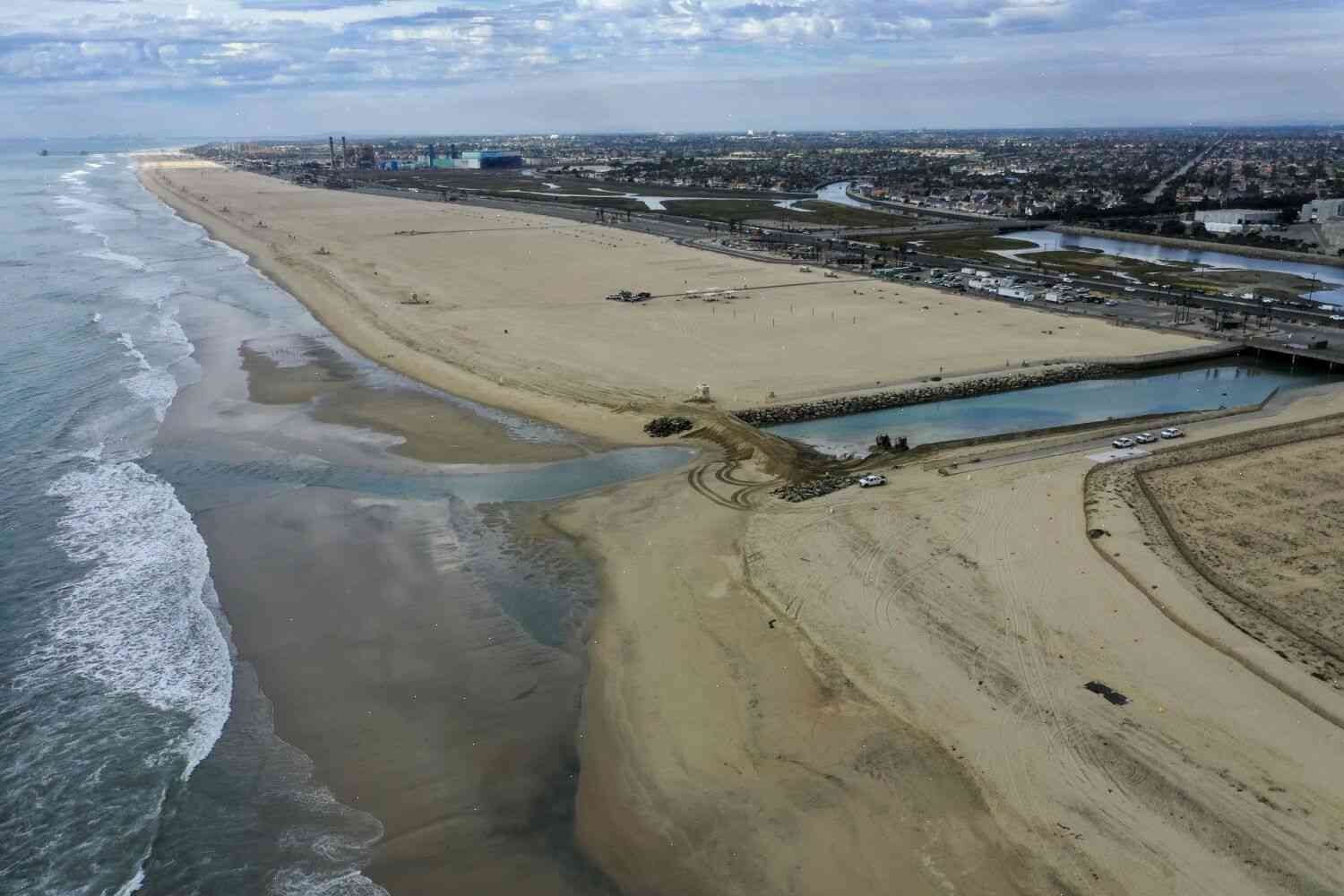Oil sheen contained in Talbert Channel near site of last year’s major O.C. pipeline spill from the Oroville Dam spillway. (Bob Young/AP)
After months of protest, the federal government on Tuesday agreed to a $5.25-billion settlement in an environmental lawsuit over a 2010 spill of contaminated water that led to the deaths of three people in California’s Lake Oroville.
The settlement, reached on the eve of a scheduled Senate hearing, followed hours of sometimes raucous negotiations over what may be the largest federal environmental case ever brought against a private oil company: the lawsuit brought by environmentalists who charged that Exxon Mobil Corp. allowed oil to flow through a damaged pipeline at the Oroville Dam.
The decision by the U.S. Justice Department settles the dispute for the environmental protection agency, and for the state of California, which sued on behalf of the Federal Energy Regulatory Commission by way of an Energy Information Administration emergency loan.
The settlement will cover the dam spill and future cleanups of more than 1,300 miles of contaminated rivers that flow into Lake Oroville.
“This is a significant and historic victory for the people of California,” said Steven Viezbicke, a lawyer for the plaintiffs. “By this settlement, the people of California and our federal and state government agencies can now move on to making lasting changes to the way the hydrocarbons in our public water sources are regulated.”
The ruling was a victory for the state, which will get $5.7 billion from the $40 billion settlement, along with more than $2 billion from the U.S. government. The agency, which regulates state and federal lands and is responsible for keeping waterways public, is barred by the settlement from recovering its costs from the company.
The two sides will likely return to court to argue over how much of the settlement should go to the plaintiffs and how much will be returned to the state. At that point, the money will likely have to be divvied up by the federal judge overseeing the case.
The settlement, released by the Justice Department, shows that the U.S. government continues to push states toward cleaning up their own environmental problems. It also provides a roadmap for other energy companies to avoid the kind of catastrophic oil spills that led to California’s environmental crisis.
The case centered on the spill from a rupt

